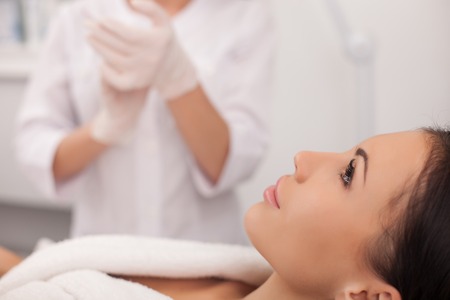Overview of Muscle Sculpting Technology in the UK
Muscle sculpting technology has swiftly emerged as a prominent trend within the UK’s aesthetics and wellness sector. These innovative devices, often utilising electromagnetic or radiofrequency energy, are designed to stimulate muscle contractions and promote fat reduction with minimal invasiveness. Clinics and wellness centres across major British cities are increasingly offering muscle sculpting treatments to meet growing demand from clients seeking body contouring solutions without surgical intervention. As adoption expands, practitioners and business owners must navigate not only evolving consumer expectations but also the complex landscape of UK regulations and safety standards that govern these advanced technologies. This context underscores the importance of understanding both the technical aspects of muscle sculpting devices and their place within the broader framework of public health, safety, and professional responsibility in the United Kingdom.
2. Classifying Devices: Medical or Cosmetic?
When navigating the UK’s regulatory landscape for muscle sculpting technology, a critical early step is determining whether your device qualifies as a medical device or falls under the cosmetic category. This distinction has significant implications for compliance requirements and directly influences your obligations under UK law. The Medicines and Healthcare products Regulatory Agency (MHRA) provides guidance, but interpretation can be nuanced.
Defining Medical vs Cosmetic Devices
According to the MHRA, a medical device is defined as any instrument, apparatus, appliance, software, material, or other article intended by the manufacturer to be used for human beings for the purpose of diagnosis, prevention, monitoring, treatment, or alleviation of disease. In contrast, cosmetic devices are products intended solely for improving appearance without therapeutic claims. In muscle sculpting technology, this means that devices claiming fat reduction for health reasons or promising muscle rehabilitation may fall under the medical device category, while those focusing on body contouring for aesthetic improvement are more likely to be classed as cosmetic.
Key Distinctions and Regulatory Implications
| Criteria | Medical Device | Cosmetic Device |
|---|---|---|
| Main Purpose | Treatment/diagnosis/prevention of disease or injury; therapeutic claims | Aesthetic enhancement; no health-related claims |
| Regulatory Authority | MHRA (Medicines and Healthcare products Regulatory Agency) | Trading Standards/Other consumer protection bodies |
| Compliance Requirements | UKCA/CE marking, clinical evaluation, post-market surveillance, technical documentation | General Product Safety Regulations (GPSR), correct labelling and advertising |
| Efficacy & Safety Evidence Needed? | Yes—robust clinical data required | No formal clinical evidence needed, but must not mislead consumers or endanger safety |
| Advertising Restrictions | Strict—must not overstate benefits or make unsubstantiated claims | No medical claims allowed; must comply with ASA (Advertising Standards Authority) guidance |
Navigating MHRA Protocols for Compliance
If classified as a medical device, your product must adhere to strict MHRA protocols: complete technical documentation, provide clinical evidence supporting your claims, ensure post-market vigilance, and secure appropriate UKCA or CE marking before entering the market. Failure to comply could result in enforcement action or product withdrawal. For cosmetic devices, while regulation is less intensive, you must still follow General Product Safety Regulations and ensure honest marketing practices. Understanding these distinctions at an early stage sets the foundation for compliance and successful market entry in the UK muscle sculpting sector.

3. UKCA Marking and Product Certification
Securing the UKCA (UK Conformity Assessed) marking is now a fundamental requirement for muscle sculpting devices marketed in Great Britain. This certification demonstrates compliance with relevant British safety and regulatory standards, replacing the CE mark post-Brexit. For manufacturers or importers, the journey begins with identifying the specific legislation that applies to your technology—often encompassing Medical Devices Regulations, Electromagnetic Compatibility, and Low Voltage Directives. Once applicable legislation is established, selecting the correct conformity assessment route is crucial; this could involve self-declaration for lower-risk categories or engaging an approved UK Approved Body for higher-risk devices. Collating a comprehensive technical file is equally important. This documentation should include design specifications, risk assessments, clinical evaluation data (where appropriate), detailed manufacturing processes, labelling information, and records of all testing conducted against British Standards. Keeping this documentation updated and readily available for inspection by enforcement authorities is not just best practice—it’s a legal obligation under UK law. The path to UKCA marking might appear intricate at first glance, but systematic planning and rigorous attention to detail ensure both compliance and consumer trust in your muscle sculpting technology.
4. Meeting Safety and Performance Requirements
Navigating the UKs rigorous regulatory landscape for muscle sculpting technology means manufacturers and operators must adhere to a robust set of safety and performance requirements. These criteria are not only legal mandates, but also practical benchmarks for consumer trust and professional integrity. Below, we break down the essential safety benchmarks as outlined by UK legislation and relevant standards bodies.
Electromagnetic Compatibility (EMC)
The UK mandates that all electrical medical devices, including muscle sculpting equipment, comply with EMC regulations. Devices must not interfere with other electronic systems, nor be susceptible to external electromagnetic disturbances. Compliance is typically demonstrated through testing aligned with the UKCA (UK Conformity Assessed) marking process, which replaced CE marking post-Brexit.
Material Safety
Material selection is critical in ensuring both user safety and device longevity. The Medical Devices Regulations 2002 (as amended) require that all materials in contact with skin or tissues are biocompatible and free from harmful substances such as phthalates or heavy metals. Manufacturers must provide documented evidence of material testing—often referencing ISO 10993 standards for biological evaluation.
User Training Requirements
Operators of muscle sculpting technology must be appropriately trained according to guidance from bodies such as the Care Quality Commission (CQC) and Health Education England (HEE). Training should cover correct usage, emergency procedures, contraindications, and maintenance routines. Some manufacturers provide accredited courses to ensure consistent competency across clinics.
Maintenance Best Practices
Routine inspection and servicing are essential for ongoing compliance and safe operation. Maintenance logs should be kept up-to-date, documenting calibration checks, software updates, replacement of consumables, and any repairs performed. Below is a summary table outlining key maintenance activities:
Maintenance Activity |
Frequency |
Regulatory Reference |
|---|---|---|
| Device Calibration | Every 6-12 months | Medical Devices Regulations 2002; Manufacturer’s Guidelines |
| Visual Inspection & Cleaning | Before each use | CQC Best Practice Guidance |
| Software Updates | As released by manufacturer | MDR Annex I – General Safety & Performance Requirements |
| Consumables Replacement | As indicated by usage/wear | Manufacturer’s Instructions for Use (IFU) |
| User Training Refresher | Annually or upon staff changes | HEE Recommendations; CQC Standards |
Diligently following these benchmarks not only helps meet statutory obligations but also ensures user wellbeing and public confidence in new muscle sculpting technologies across the UK market.
5. Advertising, Claims, and Patient Communication
Ensuring compliance with UK advertising standards is a critical aspect of introducing muscle sculpting technology to the market. The Advertising Standards Authority (ASA) sets out clear guidelines to protect consumers from misleading or exaggerated claims. As such, all promotional materials—whether online, print, or broadcast—must adhere strictly to the UK Code of Non-broadcast Advertising and Direct & Promotional Marketing (CAP Code). This means that any statements about treatment effectiveness, safety, or outcomes must be substantiated by robust clinical evidence. For instance, claims such as “guaranteed results” or “permanent fat reduction” should be avoided unless supported by peer-reviewed studies and approved by relevant regulatory bodies.
Transparency in communication is equally important. Patients must be given accurate, balanced information about what the technology can and cannot achieve. This involves clearly outlining potential risks, limitations, and realistic expectations during consultations and in patient-facing materials. Practitioners should avoid using language that could be interpreted as offering medical advice if they are not qualified healthcare professionals. Moreover, testimonials and before-and-after images must not mislead; images should represent typical results and include appropriate disclaimers where necessary.
Managing claims responsibly goes beyond legal compliance—it builds trust with patients and upholds the reputation of the practice. All staff involved in patient communication should receive training on ASA codes and best practices for ethical advertising. Regular audits of marketing content can help identify areas of risk and ensure ongoing adherence to standards. Ultimately, fostering open dialogue with patients and being forthright about product capabilities is not only a regulatory requirement but also a cornerstone of ethical practice in the rapidly evolving field of muscle sculpting technology.
6. Responsible Operation and Ongoing Compliance
Maintaining compliance with UK regulations does not end once a muscle sculpting device enters the market. Responsible operation requires continuous vigilance, beginning with robust post-market surveillance. Manufacturers and operators must actively monitor device performance in real-world settings, collecting data on safety, efficacy, and any unexpected outcomes. This ongoing scrutiny helps ensure that emerging risks are identified promptly and addressed effectively.
Adverse event reporting is another crucial responsibility. In the UK, any incidents or suspected device-related complications must be reported to the Medicines and Healthcare products Regulatory Agency (MHRA) without delay. Transparent reporting mechanisms not only foster user trust but also contribute to a safer environment for all stakeholders by enabling swift regulatory or technical responses when necessary.
Furthermore, the landscape of medical technology regulations is constantly evolving in response to new scientific insights, clinical feedback, and changes in public health priorities. Operators and manufacturers must stay abreast of updated standards and guidance issued by bodies such as MHRA, British Standards Institution (BSI), and other relevant authorities. This may involve routine training sessions, attending industry seminars, or subscribing to official regulatory updates.
Ultimately, responsible operation is about more than ticking boxes; it reflects a commitment to ethical practice and patient well-being. By investing in post-market surveillance, adhering to adverse event reporting obligations, and remaining proactive with compliance efforts, those involved in muscle sculpting technology can help safeguard users while reinforcing their reputation within the highly regulated UK aesthetic sector.


